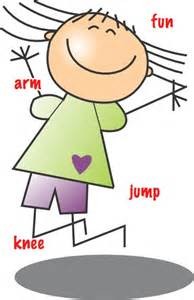 Today in Viewpoints we were working on putting Tempo, Duration, Kinesthetic Response, etc. into practice on the “grid” moving around the room. The young actors were impulsively creating shapes, rolling on the floor, repeating the movements of someone while duplicating the rhythms of the next. Students were loving this stuff! Part of the charm of this style of training is that students are never in their seats. If their body isn’t saying it then they truly don’t know what they are saying or it isn’t worth saying in the first place. Read more
Today in Viewpoints we were working on putting Tempo, Duration, Kinesthetic Response, etc. into practice on the “grid” moving around the room. The young actors were impulsively creating shapes, rolling on the floor, repeating the movements of someone while duplicating the rhythms of the next. Students were loving this stuff! Part of the charm of this style of training is that students are never in their seats. If their body isn’t saying it then they truly don’t know what they are saying or it isn’t worth saying in the first place. Read more
Monthly Archives: October 2015
Another Opening, Another – Wait a Minute
 I often face the dilemma whether to spend more time in class focused on the process of theatre making or the product of the play. Do I coach the monologue to go straight to a product (although admittedly an inferior one) which will get it ready for an audition which always seems to be happening yesterday – – or do I slow it down and layer the monologue one step at a time? I so want to take the slow rich approach but the reality of a class of kids and a quick 80 minutes on the clock dictate otherwise. Why all this rushing to a product? Read more
I often face the dilemma whether to spend more time in class focused on the process of theatre making or the product of the play. Do I coach the monologue to go straight to a product (although admittedly an inferior one) which will get it ready for an audition which always seems to be happening yesterday – – or do I slow it down and layer the monologue one step at a time? I so want to take the slow rich approach but the reality of a class of kids and a quick 80 minutes on the clock dictate otherwise. Why all this rushing to a product? Read more
With Both Hands
 I am always looking for new approaches to lead actors towards a USEFUL character analysis. Every year I try to throw in some new analysis questions and get rid of others that I no longer see viable or I have lost interest in reading (more likely the later). This year I am asking students to include the following two questions:
I am always looking for new approaches to lead actors towards a USEFUL character analysis. Every year I try to throw in some new analysis questions and get rid of others that I no longer see viable or I have lost interest in reading (more likely the later). This year I am asking students to include the following two questions:
- What is it that the character is holding on to that has already left their grasp? People, and thus characters, define them self by everything they refuse to let go of. As Linda Loman says in Death of a Salesman, “Life is a casting off.” When we refuse to loosen our grip – refuse to open our hands to let life run through it – we are creating heartbreak, turmoil, anxiety and distortions that do better in defining us then who we present in our shiniest moments. Look for the white knuckles in people and in characters and you will know who you are dealing with.
Discover First THEN Analyze
 Today in directing class I surprised everyone by asking them to bring a box of crayons and lots of scrap paper to class. We were going to color. A group of clever students who had taken this course last year from a different instructor were skeptical and asked me when the play “analysis” was going to be due. They were expecting me to hand them the rubric that would demand some thirty page document with footnote after footnote, fact after fact, research tripping on reasearch. They asked when is the “beat sheet” due? When do I need to turn in my verbs? When do I turn in my list of all possible character traits with 3 quotes each made more substantial and meaty by footnotes. Don’t I need to write an essay on every tea cup, tree, bench, and bible in the play? What’s the deadline for the tome that lays out the play’s arc, the character’s through-line, the dramatic journey, the conflict, the climax and the denouement? Why must a directing analysis be prepared as if it is intended for an English teacher? Is the goal to get a good grade or to have a workable, prepared, flexible springboard to meet the actors? Read more
Today in directing class I surprised everyone by asking them to bring a box of crayons and lots of scrap paper to class. We were going to color. A group of clever students who had taken this course last year from a different instructor were skeptical and asked me when the play “analysis” was going to be due. They were expecting me to hand them the rubric that would demand some thirty page document with footnote after footnote, fact after fact, research tripping on reasearch. They asked when is the “beat sheet” due? When do I need to turn in my verbs? When do I turn in my list of all possible character traits with 3 quotes each made more substantial and meaty by footnotes. Don’t I need to write an essay on every tea cup, tree, bench, and bible in the play? What’s the deadline for the tome that lays out the play’s arc, the character’s through-line, the dramatic journey, the conflict, the climax and the denouement? Why must a directing analysis be prepared as if it is intended for an English teacher? Is the goal to get a good grade or to have a workable, prepared, flexible springboard to meet the actors? Read more
The New Old Way to Do Things
Every year, I print out the “ol’ character analysis” and the “ol’ directing analysis” and attach a little white form to indicate how many copies I need, interest in stapling, and opinion of double-siding to the packet and place it in the bin in the copy room early in the morning before any inquisition is called as to the necessity of stretching the budget of an entire county to